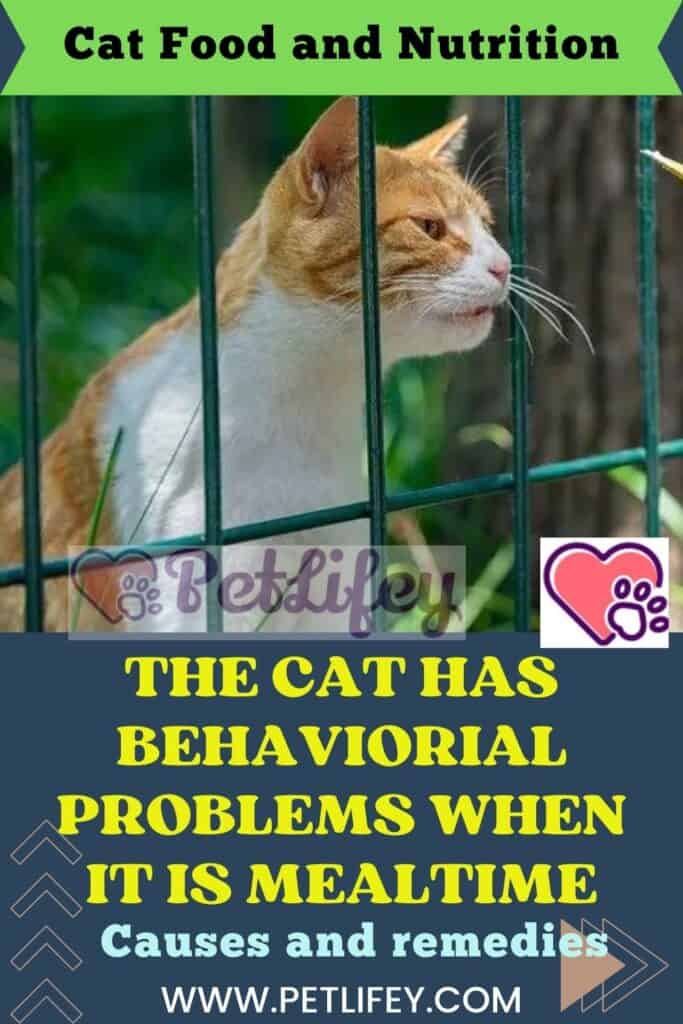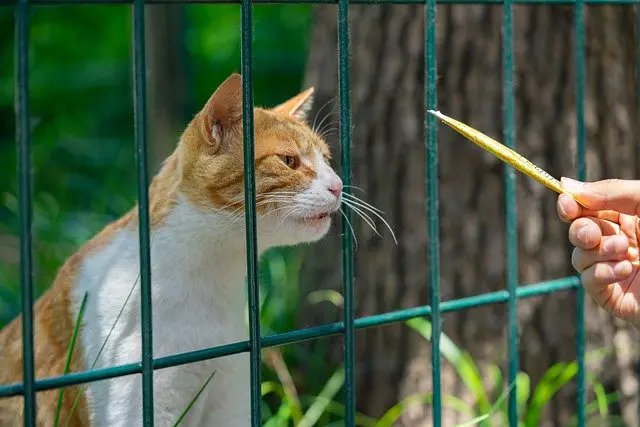
Does your cat behave differently than usual at mealtimes? Let’s find out what causes these problems and how to fix them.
If at mealtimes, the cat has very different actions and behaviors than usual, it could hide some medical problems. The causes of these problems can be related to stress, and stimulate negative behaviors even in a usually calm cat.
Problems at the cat’s lunchtime
Even the most adorable cat could become a real pest at mealtimes. Aggressive, bossy, and downright annoying behaviors can be triggered.
A cat might try to drive other animals away from their bowls by trying to take another cat’s (or even a dog’s) lunch – a real bully.
If this happens with other pets in the house, they may try to eat their lunch quickly and vigorously to avoid not getting enough food. With damaging results on their health, of course.
How can we intervene in these cases to solve the problem? Having the problem cat eat alone in a room while the other pets are quiet, but that’s not enough.
The causes of such cat behaviors
This type of behavior is not uncommon among cats. Negative actions and behaviors during meals can also hide health problems.
In fact, domestic cats can feel stressed by any change they feel in their environment, a new pet, a change in habits or diet.
Feeding cats isn’t just filling a bowl – it’s part of their environmental enrichment. Therefore, even the slightest reason for stress can cause big problems.
The stress that cats can feel can lead them to various unwanted behaviors, such as:
- Loss of appetite
- Eat your food quickly;
- Hide;
- Scratching the furniture (the sofa, for example);
- To do the needs outside the litter box;
- Excessive deburring;
- Licking continuously, until you create red spots or bald spots in the hair;
- Fights with other animals of the house.
And, from a medical point of view, the stress associated with this type of cat behavioral problems during meals can lead to disorders such as:
- Feline idiopathic cystitis;
- Skin diseases;
- Urinary tract infections;
- Weakened immune system.
How to solve the problem
According to experts, the best thing to do to solve such problems is to try to think more like their cats would when lunchtime comes.
Even among human beings, in fact, many love to gather around a table with large plates full of food and eat abundantly all together. But cats aren’t like that.
Our pets love to eat alone, and they don’t want to be with other animals at lunchtime, let alone share food from their bowl.
They are also hunters by nature, and rather than being fed once or twice a day they prefer to have many small meals throughout the day.
Let’s consider that the cat’s stomach is the size of a ping pong ball. This explains the many bizarre eating behaviors, but also the habit of eating little and often, of cats.
Hunting and capturing a small prey, several times a day, can be imitated at home by dividing the meal into many small portions during the day.
Cats love to hunt, catch prey, play, eat, wash and sleep. However, this circuit cannot work if we only give them one big meal a day.
In nature, we have to consider that a cat spends about 80% of its awake time looking for food. At home we should try not to interfere too much with this habit.
Furthermore, the type of food and its texture can also create behavioral problems in some cats. Our four-legged friends may have a preference for a specific texture of food.
If we change the consistency of the cat’s food, this could make him nervous, and even lead him to skip meals. Some cats prefer kibble, others prefer wet food. Let’s try to figure out which one our cat prefers.
And of course, let’s not forget the water. We keep the water bowl away from the food bowl, and as far away from our cat’s litter box as possible.
Even about water, cats have individual preferences: some like to have more points to drink from, some like to drink from taps, some still love flavored water.
The feeding of cats and their feelings

Cats can be very sensitive, as their owners are well aware. They may also mourn the loss of a person, cat, or dog they felt connected to.
Some cats, if really very pained, may not even eat anymore. But also situations that feel stressful (moving, moving, family conflicts) can lead cats to stop eating.
If our cat does not eat for 24 hours, however, we should contact our trusted veterinarian. These animals need to constantly take in food.
From all this information, we can understand that there is no single cause for cat’s problematic eating behavior.
We must therefore investigate to understand what this problem is linked to, in order to apply the most suitable solution to the case.






